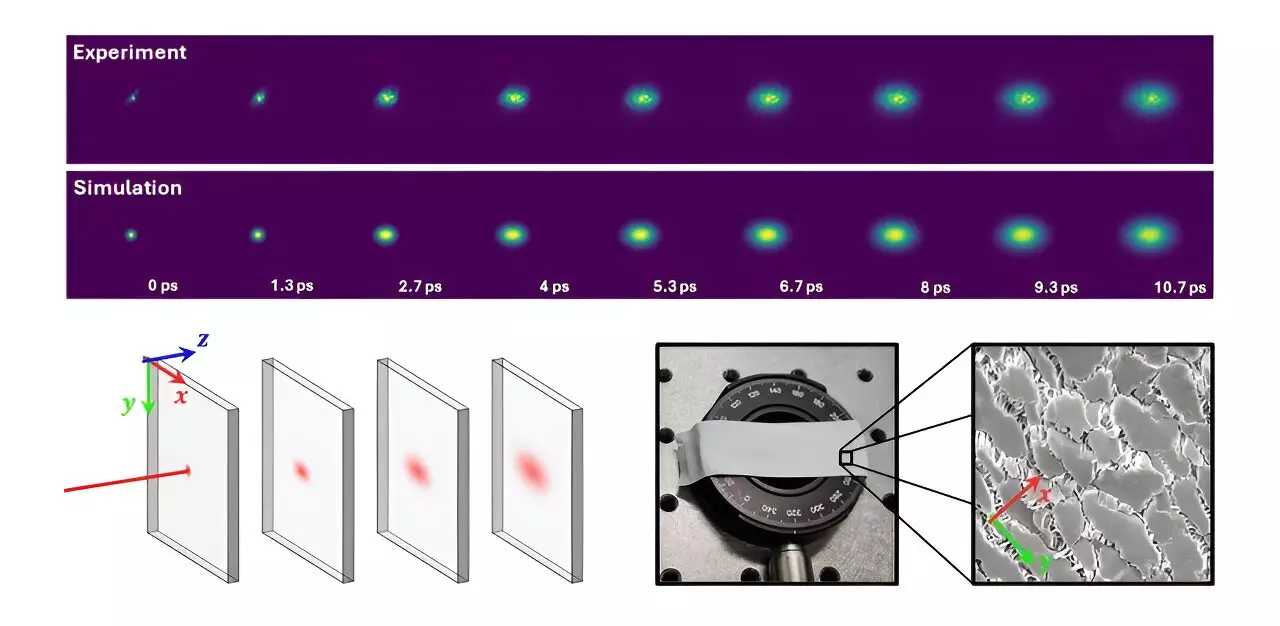In the vast and intricate world of materials science, understanding the behavior of light as it travels through different substances is not merely an academic exercise; it has far-reaching implications across multiple fields, including medical imaging and manufacturing. The study of light scattering provides critical insight into the optical properties of materials, informing practices ranging from product design to health diagnostics. However, a persistent challenge arises from the directional behavior of light in various materials, known as anisotropy. This directionally dependent scattering has historically complicated the process of accurately modeling and measuring the optical characteristics of materials.
A groundbreaking study published in Advanced Photonics Nexus has shed new light on this longstanding issue. Researchers at the European Laboratory for Nonlinear Spectroscopy (LENS) presented an innovative technique that seamlessly integrates time-domain transmittance measurements with sophisticated Monte Carlo simulations. This method allows scientists to delve deeper into the complexities of light behavior in anisotropic materials, providing a pathway to more precise analyses.
The research team, led by Dr. Lorenzo Pattelli of the Italian National Institute of Metrological Research, ambitiously tested their method on two widely used anisotropic substances: Teflon tape and paper. Teflon, with its industrial prevalence, and paper, characterized by the natural anisotropy of aligned cellulose fibers, were carefully selected to exhibit distinct forms of light scattering. By employing a transient imaging technique, the researchers could capture real-time changes in light patterns produced by ultrashort light pulses as they interacted with these materials.
The core innovation of this research lies in its ability to comprehensively characterize how light scatters through structures that exhibit anisotropic characteristics. The combination of time-domain measurements with advanced simulations yielded new insights into the scattering properties of both Teflon tape and paper. The researchers not only observed notable variances in the diffusion of light in different directions but also successfully retrieved the detailed scattering tensor coefficients for the first time. This level of granularity in measurement has been elusive thus far, and the results were in alignment with the predictions made by the simulations, establishing the method’s credibility.
Dr. Pattelli articulated an important realization arising from this research: many previous studies had oversimplified the behavior of scattering materials by assuming isotropy. This oversight has significant ramifications, leading to the inaccurate reporting of scattering coefficients in structurally anisotropic media. The results from this study stand as a compelling reminder of the necessity to appreciate anisotropic effects in material characterization. Ignoring these aspects can yield systematic errors, undermining the reliability of scientific conclusions and applications.
The ramifications of this methodological advancement extend beyond academic interest, offering tangible benefits in real-world applications, particularly in the realm of medical diagnostics. As researchers refine their understanding of how light interacts with complex biological tissues, improvements to imaging techniques could lead to more accurate diagnoses and better treatment planning. In material science, the capacity to understand and manipulate optical properties opens up opportunities for designing advanced materials—think of versatile materials that can be shaped based on their light interaction properties or improving the efficacy of optical devices.
Moreover, the insights gained can encourage further interdisciplinary collaboration among physicists, engineers, and life scientists, fostering innovation in technologies that rely on light scattering and absorption. This study exemplifies how a nuanced understanding of material properties can lead to advancements across diverse scientific and industrial landscapes, resonating well beyond the confines of traditional optics.
As we advance into an era that increasingly values precision and accuracy, the techniques developed in this study could transform our approach to studying anisotropic materials. This comprehensive framework not only enhances the fundamental understanding of light-material interactions but also sets the stage for pioneering future research, optimizing material design, and improving technological applications. This research marks a pivotal moment in the ongoing quest to decode the complexity of light’s behavior, ultimately inspiring innovations that can reshape both scientific inquiry and practical applications in various fields.


Leave a Reply